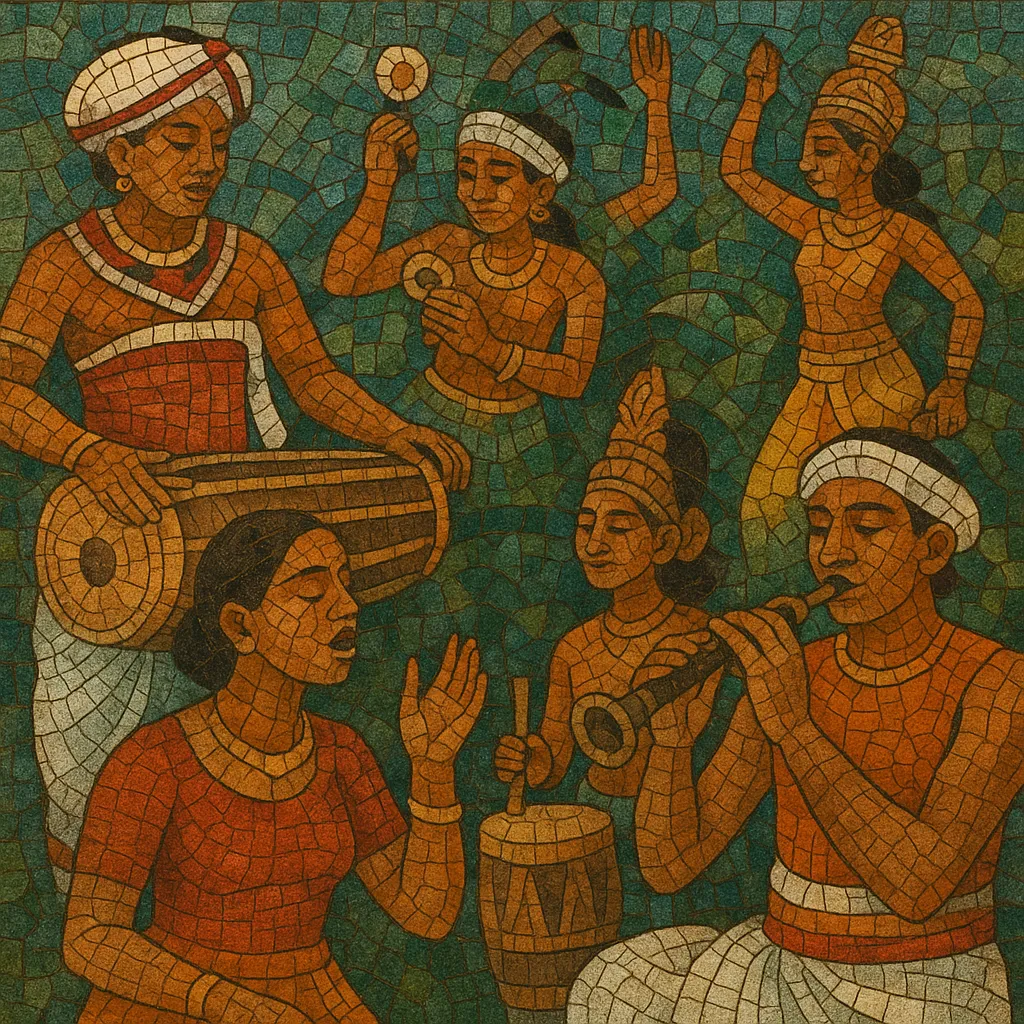Sinhalese folk music is the traditional music of the Sinhala people of Sri Lanka, centered on voice and drum ensembles that accompany ritual, dance, work, and communal celebration. It places strong emphasis on cyclic drum patterns, call-and-response vocals, and strophic song forms tied to everyday life and seasonal ceremonies.
Typical instruments include a family of indigenous drums (geta bera, yak bera, dawula/daula, thammattama), the hourglass udekki, large frame-drum rabana (especially for New Year circle-drum songs), the double-reed horanewa (folk shawm), bamboo flutes, small cymbals (thalampata/thalampota), and the conch shell (hakgediya) used in processions. Melodies are modal and often raga-influenced, moving between pentatonic and heptatonic frameworks, with drones supplied by sustained tones or harmonium.
Core genres and contexts include the dance-songs of the Kandyan tradition (vannam), improvised bardic verses (virindu), mask and folk theatre repertoires (kolam and sokari), devotional and work-song poetries (kavi, nelum kole, pel kavi), lullabies, harvest and fishing songs, and exorcistic/ritual drumming in low-country traditions. The music’s cadences, poetic prosody, and drum syllabaries (bol) are intimately bound to Sinhala language and ritual practice.
Sinhalese folk music coalesced from temple, court, and village practices across medieval Sinhala kingdoms. By the 1200s, distinctive drum ensembles and chant-derived vocal styles were embedded in Buddhist ritual, seasonal agrarian life, and communal festivities. Low-country exorcistic rites (yaktovil) and Kandyan court dance traditions fostered rich drum languages and responsorial singing.
Between the 17th and 19th centuries, folk-theatre genres such as kolam (masked dance-drama) and sokari spread narrative song repertories, while the Kandyan dance suite developed the 18 vannam as emblematic sung-dance pieces. Exposure to South Indian (especially Carnatic) melodic ideas and instruments during courtly and temple exchanges deepened modal vocabularies. Portuguese and later Dutch/English colonial contact added new instruments (violin, guitar, harmonium) that gradually entered folk usage without displacing the drum-centered core.
In the mid–20th century, collectors, educators, and composers documented rural repertoires and adapted them for radio and concert use. Figures such as W. B. Makuloluwa and Lionel Ranwala gathered village songs, while Sunil Santha, W. D. Amaradeva, and Ananda Samarakoon wove folk modalities and Sinhala prosody into art- and light-classical songs, shaping a modern folk-inspired song culture. New Year raban songs, work chants, and virindu poetry found renewed visibility via radio and state ensembles.
Today, Sinhalese folk music thrives in ceremonial pageants (perahera), dance schools, universities, and community events. Professional folk troupes preserve drum languages and theatre repertoires, while contemporary artists and ensembles blend traditional drums, horanewa, and vannam melodies with harmonium, guitar, and modern studio techniques. Education and media have strengthened transmission, even as staged contexts and fusion projects expand audiences.


